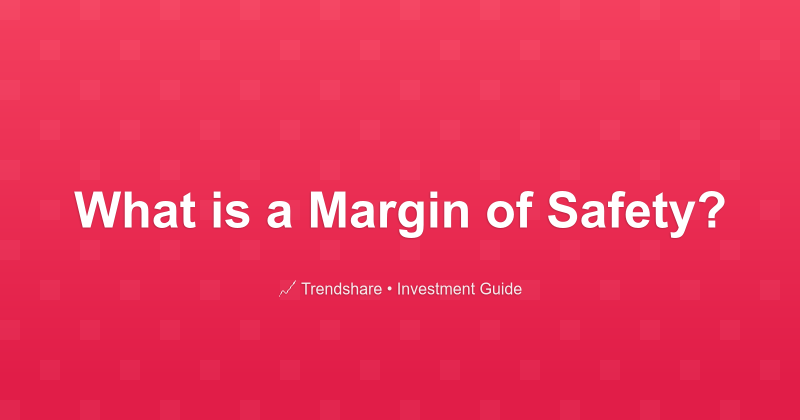
What is a Margin of Safety?
By Ethan Mercer
Financial Technology Analyst • 10+ years in fintech and payments
What is a margin of safety? An easy way to reduce the risk of value investing! How to use safety margin calculations.
How "safe" is an investment? Prices fluctuate. Prices may fluctuate a lot. Does that make an investment risky? It can, but you can also protect yourself.
How Safe is an Investment?
Benjamin Graham's The Intelligent Investor has these wise words:
[The] idea of risk is often extended to apply to a possible decline in the price of a security, even though the decline may be of a cyclical and temporary nature and even though the holder is unlikely to be forced to sell at such times.... But we believe that what is here involved is not a true risk in the useful sense of the term.
If a group of well-selected common-stock investments shows a satisfactory over-all return, as measured through a fair number of years, then this group investment has proved to be "safe". During that period its market value is bound to fluctuate, and as likely as not it will sell for a while under the buyer's cost.
[It] is our thesis that a properly executed group investment in common stocks... should not be termed "risky" merely because of the element of price fluctuation.
Graham assumes diversification—holding a group of stocks. Graham advocates patience and research: find good companies, buy them at a discount, and hold them while they're good companies.
This is a good strategy. (It's the basis of value investing, after all.) Yet there's a risk here that Graham didn't mention: incomplete knowledge. What if you overlook something? What if you don't have complete information? What if you look back in five years and say "If I'd know that, I wouldn't have invested!"? As you know, the price you pay for a stock determines your potential profit or loss. Is there a way to discount the price to address the risk of the unknown?
What is a Margin of Safety?
Graham also writes:
If the investor will buy only at prices at least one-third under the indicated value, he will acquire a cushion that should be adequate to absorb the shock of the unexpected or the miscalculated event.
You can calculate a fair price for a stock, based on the intrinsic value of the business and the stocks' present value. This is the heart of value investing. If you're cautious—if you're safe—you can discount that fair price even further. Take off another 10%, 20%, 50% from that discounted price depending on the riskiness of the stock to make up for any overestimates of the business's growth and potential.
A margin of safety is a discount to the price you want to pay to buy a stock, used to account for unforeseen negative circumstances.
How Do You Choose a Margin of Safety?
A big, stable, industry-leading company (a member of the Dow Jones Industrial Average), for example, is more predictable than a small company or a new company. Decades of profits and growth and dividends make predicting the future easier. The margin of safety for an or an Exxon is necessarily smaller than for a tiny upstart burger franchise that started three years ago and had its IPO last week.
A stock in the Dow might merit a 10% margin of safety. A stock in the S&P 500 index might need a 15% margin of safety. A small-cap might need 25% or 30% or more. It's all up to your confidence in the history, analysis, and potential of the business to surprise you. There's no single value which makes sense for all stocks, but a good rule is to expand your margin of safety as size and stability decrease.
If Graham is right (and in the 60+ years since he wrote The Intelligent Investor, history has proven him right), then your goal as a value investor is to look for good stocks at great discounts, diversify over a few of them, then wait patiently for the market to prove you right.
Investment Disclaimer
This article is for educational purposes only and does not constitute investment advice. Stock prices, financial metrics, and market conditions change constantly. Company examples are provided for illustration and should not be considered recommendations. Always verify current data from official sources such as company investor relations pages or SEC filings, assess your own risk tolerance and investment objectives, and consult a qualified financial advisor before making investment decisions. Past performance does not guarantee future results.